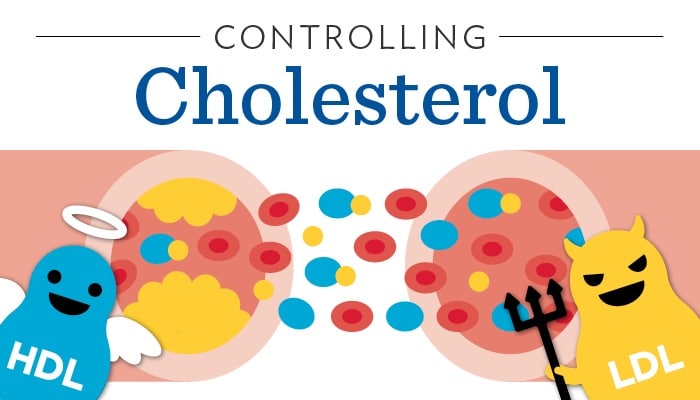
Whole Body Cryotherapy: Reduces Bad Cholesterol LDL, Raises Good Cholesterol HDL
Cholesterol frequently gets a bum rap, but it’s necessary for your body to function properly. Your body uses cholesterol to make hormones and vitamin D, and support digestion. Your liver generates enough cholesterol to handle these tasks, but your body doesn’t just get cholesterol from your liver. Cholesterol is also in foods such as meat, dairy, and poultry. If you eat a lot of these foods, your cholesterol levels may become too high.
There are two main types of cholesterol: high-density lipoprotein (HDL) and low-density lipoprotein (LDL). Lipoproteins are made of fat and proteins. Cholesterol moves through your body while inside lipoproteins.
HDL is known as “good cholesterol” because it transports cholesterol to your liver to be expelled from your body. HDL helps rid your body of excess cholesterol so it’s less likely to end up in your arteries.
LDL is called “bad cholesterol” because it takes cholesterol to your arteries, where it may collect in artery walls. Too much cholesterol in your arteries may lead to a buildup of plaque known as atherosclerosis. This can increase the risk of blood clots in your arteries. If a blood clot breaks away and blocks an artery in your heart or brain, you may have a stroke or heart attack.
Plaque buildup may also reduce blood flow and oxygen to major organs. Oxygen deprivation to your organs or arteries may lead to kidney disease or peripheral arterial disease, in addition to a heart attack or stroke.
Lifestyle factors that may cause high cholesterol are:
- obesity
- a diet high in red meat, full-fat dairy products, saturated fats, trans fats, and processed foods
- a large waist circumference (over 40 inches for men or over 35 inches for women)
- lack of regular exercise
According to a 2013 review, smokers typically have lower HDL cholesterol than nonsmokers. Research shows quitting smoking can increase HDL. If you smoke, talk to your doctor about smoking cessation programs or other methods you can use to quit smoking.
It’s unclear if stress directly causes high cholesterol. Unmanaged stress may lead to behaviors that can increase LDL and total cholesterol such as overeating fatty foods, inactivity, and increased smoking.
In some cases, high LDL is inherited. This condition is called familial hypercholesterolemia (FH). FH is caused by a genetic mutation that affects the ability of a person’s liver to get rid of extra LDL cholesterol. This may lead to high LDL levels and an increased risk of heart attack and stroke at a young age.
To treat high cholesterol, doctors often recommend these lifestyle changes:
- stopping smoking
- eating a healthy diet
- exercising regularly
- reducing stress
Sometimes lifestyle changes aren’t enough, especially if you have FH. You may need one or more medications such as:
- statins to help your liver get rid of cholesterol
- bile-acid-binding medications to help your body use extra cholesterol to produce bile
- cholesterol absorption inhibitors to prevent your small intestines from absorbing cholesterol and releasing it into your bloodstream
- injectable medications that cause your liver to absorb more LDL cholesterol
Medications and supplements to reduce triglyceride levels may also be used such as niacin (Niacor), omega-3 fatty acids, and fibrates.
Now there’s another way to lower bad cholesterol and raise good cholesterol without the use of drugs. Recent research on the effect of whole body cryotherapy on cholesterol levels shows that 10 or more treatments successfully lowered bad cholesterol (LDL) while simultaneously increasing good cholesterol (HDL). Test subjects who received less than 10 treatments did not show improvement in their cholesterol levels. For anyone living with high cholesterol, this is an incredible finding. It may be possible to get off of cholesterol pharmaceuticals through the use whole body cryotherapy. You can read the research paper abstract below for more information on the study and it’s findings.
At ChillRx Cryotherapy, we treat clients with high cholesterol. In addition to lowering their LDL levels and raising their HDL levels, our clients experience weight loss, increased energy (mental and physical), improved mood and better sleep. Our cholesterol lowering protocol was developed by a board certified medical physician; ChillRx offers the most effective and safe whole body cryotherapy treatment programs. For more information on whole body cryotherapy, please visit www.chillcryo.net
Chill Cryotherapy is located in Westfield, NJ. Appointments may be booked online or call 908.228.5711. We offer both whole body and local cryotherapy treatments.
The Research:
http://www.ncbi.nlm.nih.gov/pubmed/20385115
Changes in lipid profile in response to three different protocols of whole-body cryostimulation treatments.
Lubkowska A1, Banfi G, Dołegowska B, d’Eril GV, Łuczak J, Barassi A.
Author information
Abstract
Systemic cryostimulation is useful treatment, both in sport and medicine, during which human body is exposed to very low, cryogenic temperature (below -100 degrees C). Although there exists some evidence of its beneficial effect in biological regeneration, so far it has not been unequivocally determined if the positive effect of repeated stimulations depends on their number in a series. The aim of this research was to estimate the influence of 5, 10 and 20 sessions of 3 min-long exposures to cryogenic temperature (-130 degrees C) on the lipid profile in physically active men. Sixty-nine healthy volunteers participated in the study. The blood samples were taken in the morning, after overnight fasting, before the first cryostimulation session, and the following morning after the last one (5th,10th, 20th). In serum specimens the concentration of total cholesterol (TCh), HDL cholesterol and triglicerydes were determined using enzymatic methods. LDL cholesterol level was calculated using Friedewald formula. The changes in lipid profile (LDL decrease with simultaneously HDL increase) occurred after at least 10 sessions of cryostimulation.
